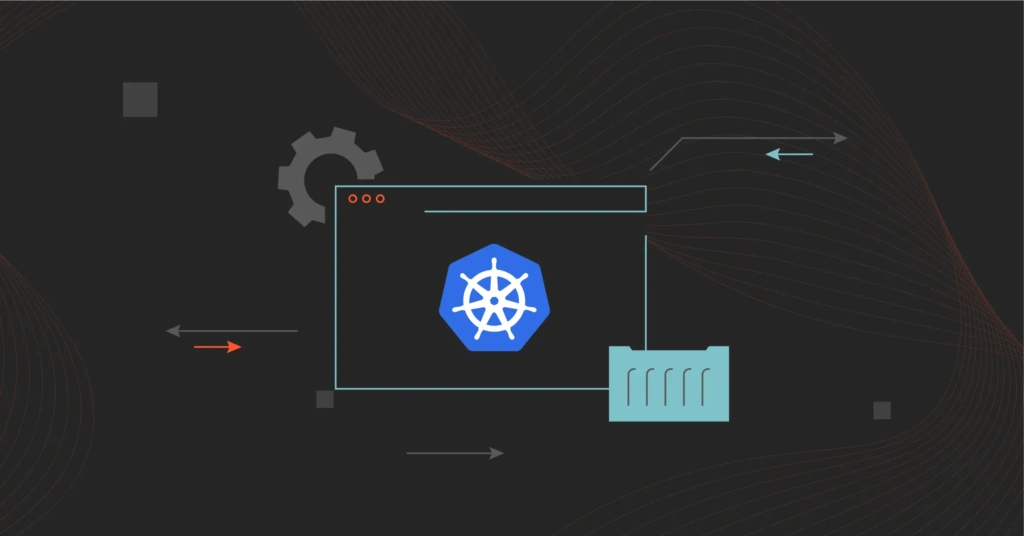Containers and microservices are revolutionizing how distributed applications are built, run, and optimized. They enable apps to be highly scalable. You can also isolate some areas for updates and patches without shutting down the entire application or service.
Yet, managing containers and microservices at scale can be tricky. That’s where a container management platform like Kubernetes comes in – or, as you’ll see below, where the top Kubernetes alternatives shine.
What Is Kubernetes?
Kubernetes (K8s) is an open-source, highly scalable, and resilient container orchestration platform. It offers powerful container management features like horizontal scaling, self-healing, and automated rollbacks.

You can also add new capabilities to K8s clusters without modifying upstream code. Kubernetes is also popular for enabling organizations to orchestrate enterprise-grade containerized applications in almost any environment.
But Kubernetes is far from perfect.
- It can be difficult and time-consuming to migrate to Kubernetes
- Managing Kubernetes clusters requires advanced skill and constant monitoring
- Similarly, Kubernetes can be overkill for smaller deployments
- K8s can be shockingly expensive to deploy, operate, and maintain
- Many cost tools offer lackluster Kubernetes cost monitoring and optimization
Maybe you’ve had enough of K8s after burning a hole in your cloud budget. But, perhaps K3s, the lightweight version of Kubernetes, is not suitable for your needs. So, where do you go from here?
You can replace Kubernetes completely or partially.
If you prefer to swap K8s with an easier-to-use alternative to Kubernetes, here are ten good choices. We will organize these alternatives into four categories:
- Platform-as-a-Service (PaaS)
- Container-as-a-Service
- Managed Kubernetes service
- Container Orchestration Tools
PaaS Kubernetes Alternatives
PaaS empowers customers to create apps and run them on the cloud provider’s runtime environment, which can be accessed via APIs. Cloud providers typically handle most of the work, such as ensuring service availability.
In addition, they offer improved monitoring, security, networking, and other management capabilities over plain Kubernetes.
These K8s competitors include:
1. Docker

Docker is a suite of Platform-as-a-Service (PaaS) tools that use OS-level virtualization to run apps or software in packages (containers) — although, like K8s, Docker isn’t purely PaaS, IaaS, or SaaS. These packages have everything the app needs to run, such as libraries, code, system tools, and runtime. Docker enables you to build, test, and deploy apps quickly and is easier to manage than Kubernetes.
Although Docker seized being the runtime for Kubernetes (from version 1.23), you can still run your Docker build images in a K8s cluster. Docker is also synonymous with building containers (containerization), came before K8s, and is more user-friendly than Kubernetes. Yet it has its own clustering and container orchestration tool, Docker Swarm, making it a top alternative to K8s.
Also, Docker Compose lets you use YAML files to define the app’s services and uses a single command to execute the build and start-up sequence of all the containers. Docker Volume enables data persistence independently, so data persists even after containers are deleted or recreated.
2. OpenShift by RedHat
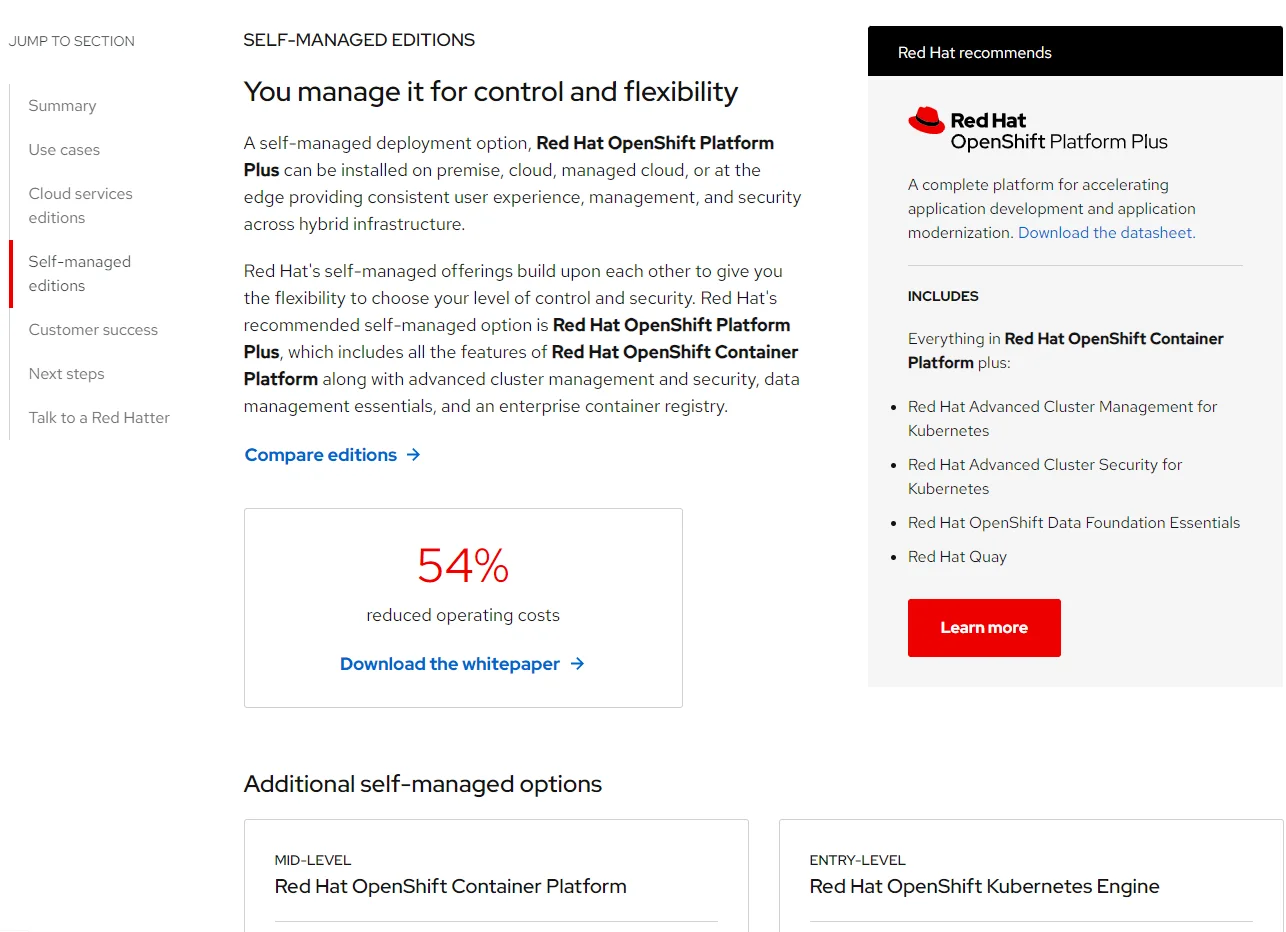
For customers interested in Kubernetes-like features, RedHat provides several tools. OpenShift offers products for AWS, Azure, IBM Cloud, as well as a dedicated edition. Its self-service edition includes OpenShift Platform Plus, OpenShift Container Platform, and OpenShift Kubernetes Engine.
RedHat OpenShift Container Platform provides a hybrid platform for developing and scaling containerized applications. It blends the Red Hat Enterprise Linux (RHEL) and Kubernetes with Docker-based Linux containers.
It also features consistent support for Docker’s Red Hat API, orchestration, networking, scheduling, and serverless deployment tools. You can also build deployment routes, simulate failures, and configure circuit breakers via service mesh.
In addition, you can use OpenShift as a Container-as-a-Service platform, enabling you to use pre-existing container images for deployments — provided your images meet the OpenShift Container Initiative (OCI) requirements.
3. Rancher
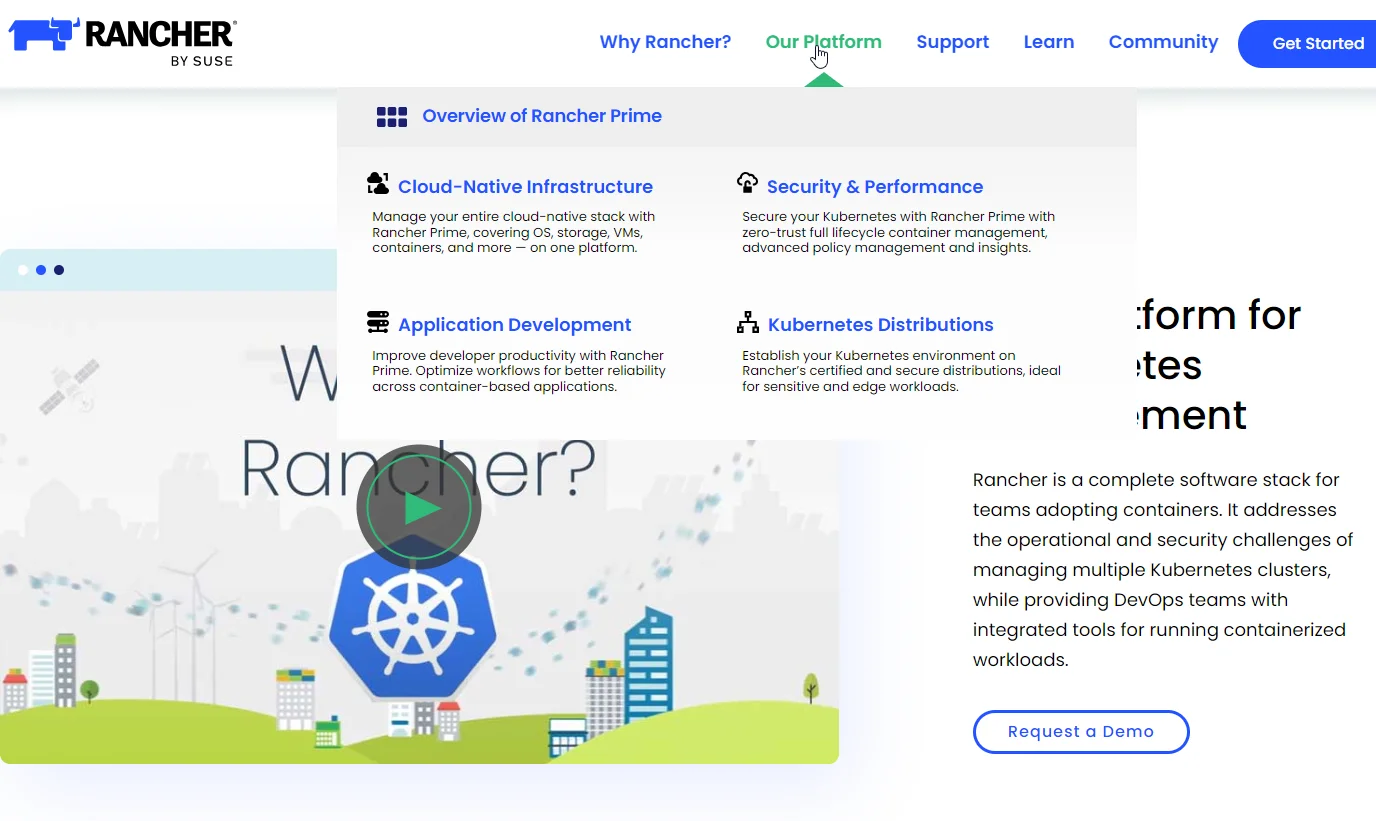
Rancher is an enterprise-grade platform for running containerized workloads. Rancher enables you to deliver Kubernetes as a service while also marketing itself as an enterprise Kubernetes management platform.
An open-source project in GitHub, Nomad also includes tools for image management, container orchestration, integrated security, and roadmapping.
Whether you’re using Rancher on-premises, bare metal, public or private clouds, you can run your containers anywhere.
Besides container load balancing and cross-host networking, it also supports persistent storage services, seamless user management, and multi-cloud orchestration.
4. Onteon
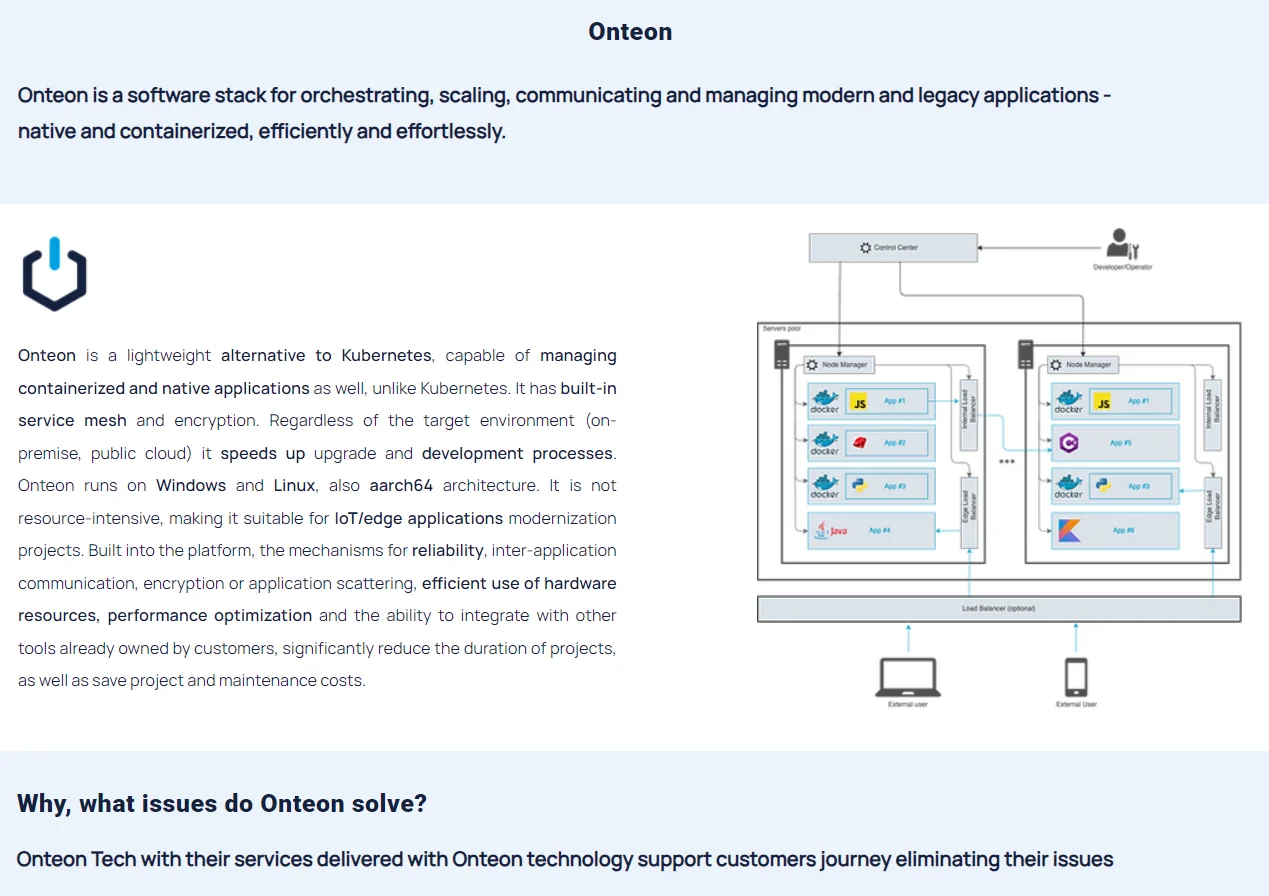
If you want a platform that can handle both cloud-native and on-prem deployments, containerized and non-containerized applications, or do both efficiently, Onteon may help.
It is a software suite for orchestrating, scaling, communicating, and managing cloud-native, legacy, and on-premise applications.
Onteon also runs on a hybrid cloud setup and supports Docker-style container orchestration. Unique Onteon features include built-in networking, security, and performance monitoring beyond what’s available on plain K8s.
Also expect distributed load balancing, intelligent health checking, and service repository, among others.
Containers-as-a-Service (CaaS)
CaaS offers cloud-based platforms for uploading, organizing, running, scaling, and managing containers via container-based virtualization.
CaaS relieves software development teams of the burden of managing, deploying, and monitoring the underlying infrastructure that runs containers.
These platforms include:
5. AWS Amazon Fargate
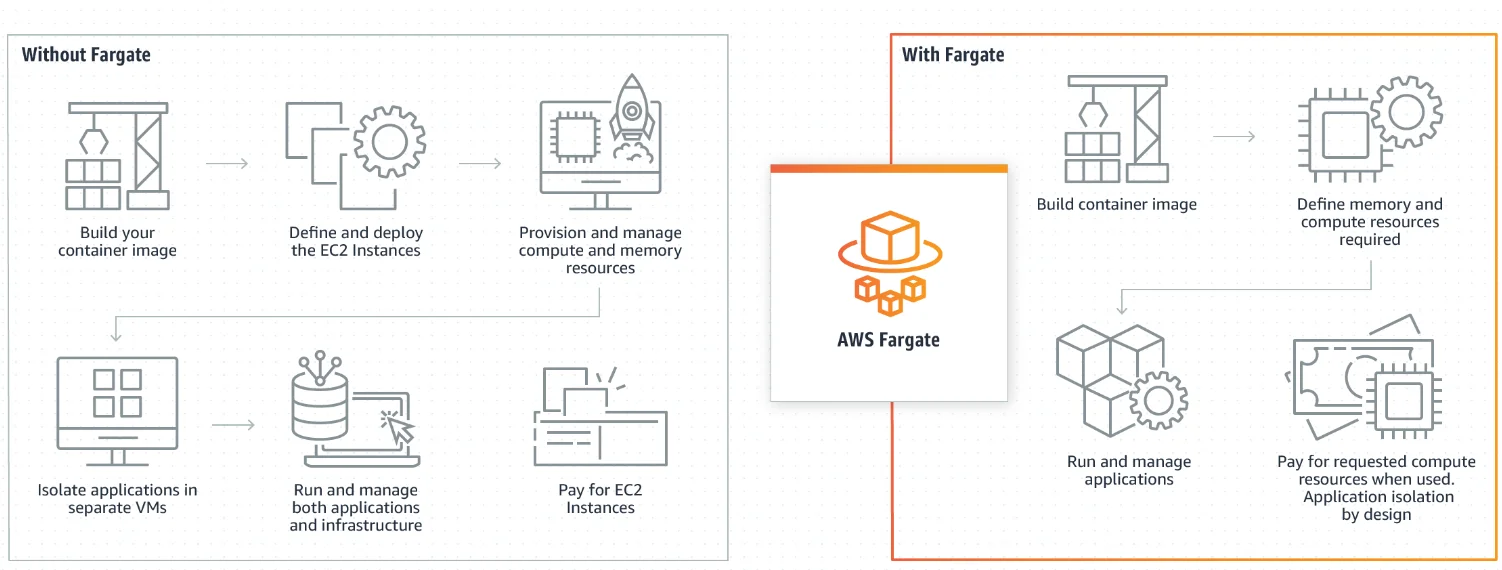
AWS Fargate can be helpful if you use Amazon Web Services (AWS) extensively, but don’t want to use AWS’s fully managed container service or actively manage AWS container infrastructure using EC2 instances.
AWS Fargate is a serverless compute engine that lets you use Amazon ECS tasks and services to package your app in containers, select the operating system, CPU, and memory needs, specify networking and IAM policies, and begin running the application.
In Fargate, each task has its own isolation boundary, so it does not share kernel, CPU, or memory resources, nor does it share the elastic network interface.
6. Google Cloud Run
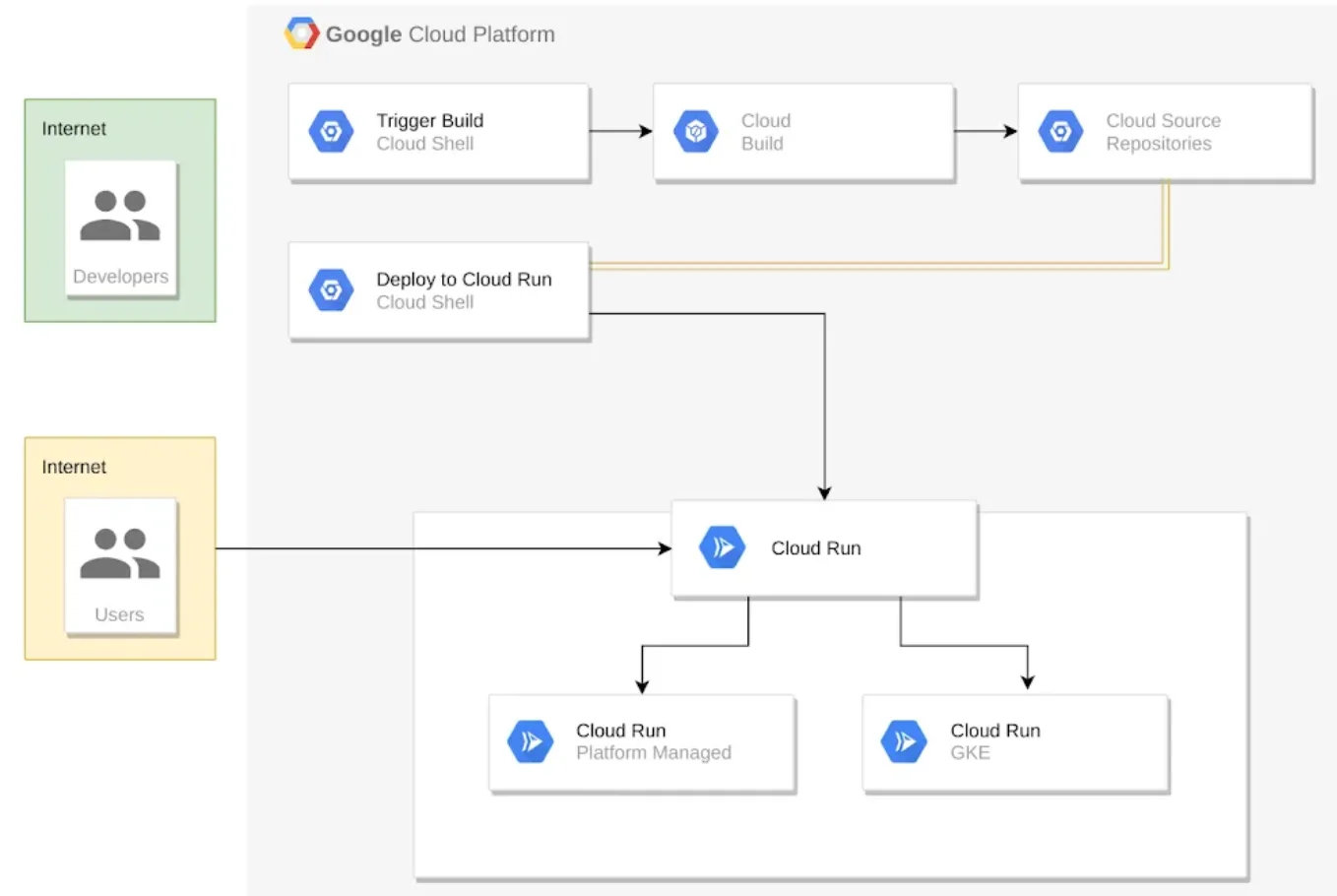
Cloud Run is a serverless, managed compute platform where you can use Go,.NET, Node.js, Python, Java, and even Ruby to build, deploy, and run containers directly atop Google’s highly scalable infrastructure.
You can even use the source-based deployment approach to automate container building, following the best practices for the specific language you use.
With Cloud Run, you can execute your code continuously, either as a job or service. Both will run in the same environment and can utilize the same integrations with other Google Cloud services, enabling you to build full-featured applications.
Cloud Run handles most operations, configuration, and scaling tasks, including creating a cluster or managing infrastructure.
The platform is ideal for stateless containerized microservices that do not demand Kubernetes features like namespaces, node allocation, and management, as well as co-location of containers in pods (sidecars).
Other examples of CaaS platforms include Azure Container Instances and Amazon Elastic Container Service (ECS).
Managed Kubernetes Services As K8s Alternatives
If you want to remove much of the handy work of deploying and maintaining Kubernetes, these services provide just that. The third-party providers handle some or all of the work required for successfully setting up and operating your K8s clusters. These include:
7. Google Kubernetes Engine (GKE)
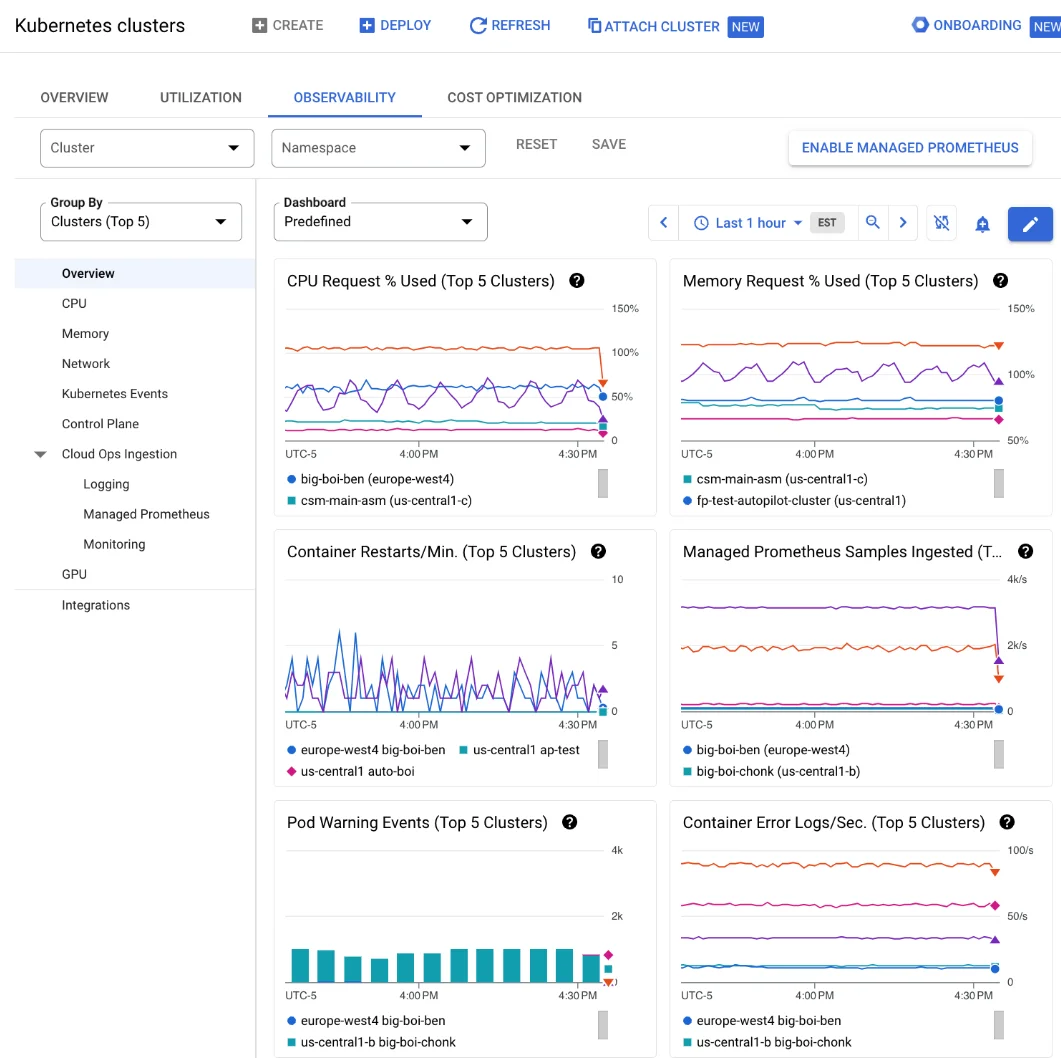
Google first developed Kubernetes internally as Borg, was the first major provider to offer it as a managed service, and now offers it as a powerful, managed service through GKE.
It facilitates the configuration, resizing, updating, upgrading, and debugging of container clusters. GKE also includes a replication controller for running multiple pods simultaneously.
GKE features empower you to manage configurations, secure containers in sandbox environments, connect multiple nodes to a cluster, and develop applications with attached persistent storage.
You can also set resource limits as an admin. GKE also works natively with the Google Cloud CLI.
8. Amazon Elastic Kubernetes Service (EKS)
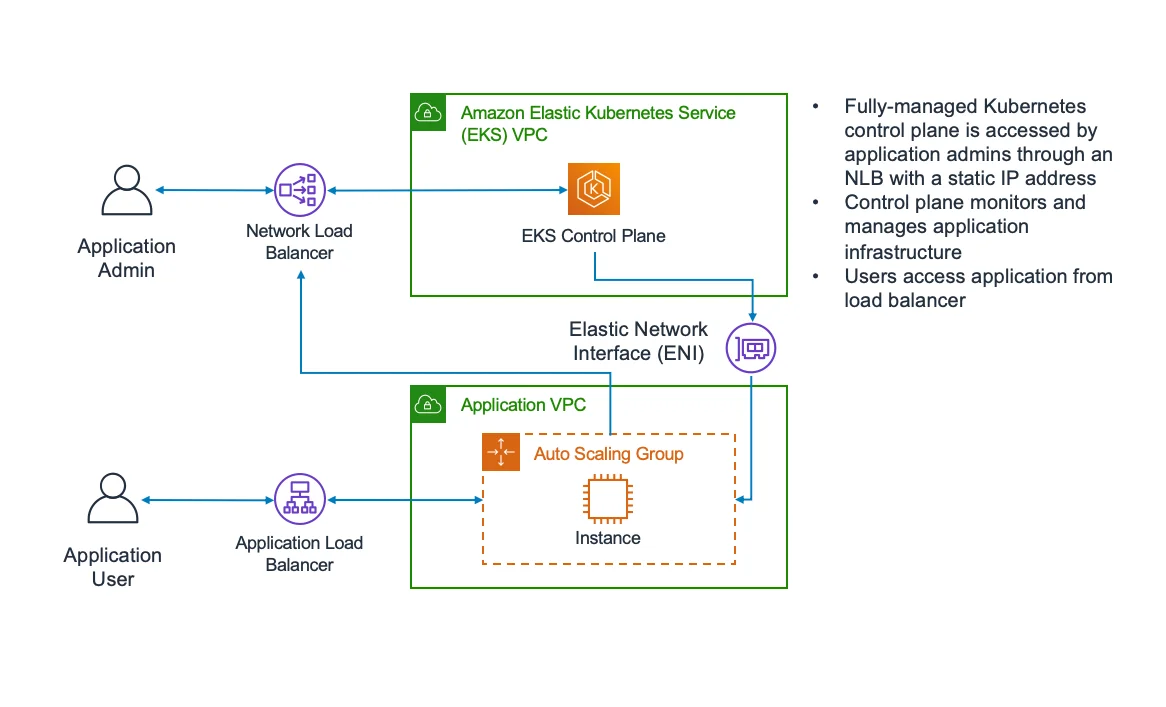
If you use the second-most popular cloud provider today, AWS, EKS provides a managed container service for deploying Kubernetes apps on-premise or in the cloud.
It enables you to start, run, and scale them without worrying much about the underlying infrastructure, such as building and maintaining nodes and a K8s control plane.
The EKS platform is also suitable if you want to run advanced machine learning models, security, and basic Kubernetes cost monitoring in a single place.
Other Kubernetes-as-a-Service or managed Kubernetes services include Azure Kubernetes Service (AKS), VMWare Tanzu Kubernetes Grid, Linode Kubernetes Engine, Oracle Container Engine for Kubernetes, and the DigitalOcean managed Kubernetes service.
Container Orchestration Tools
K8s is best known as a robust container orchestration platform. The following services provide more user-friendly container orchestration.
9. Nomad by HashiCorp
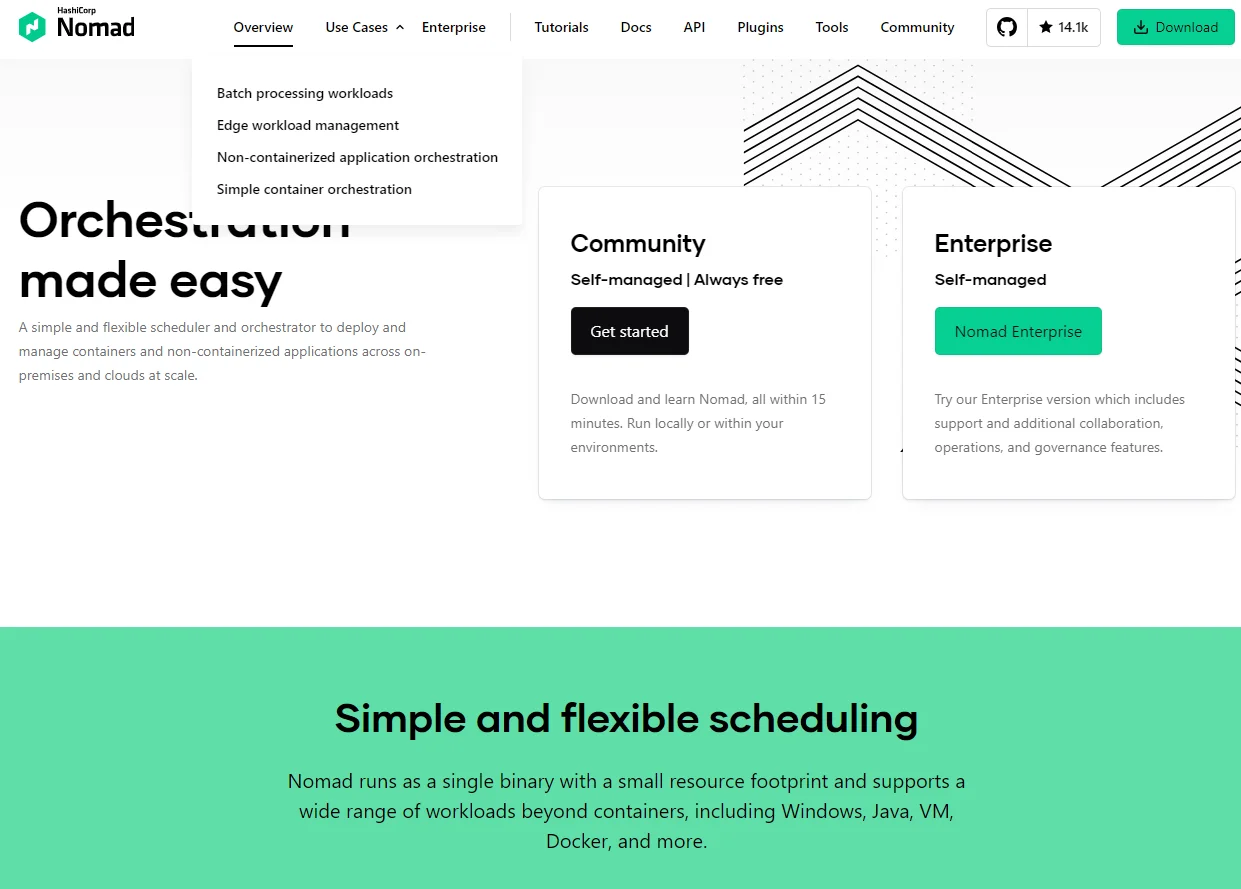
Using Nomad, you can deploy Docker, non-containerized, microservices, and batch application workloads more easily than Kubernetes. Nomad makes clustering a breeze, for example. You can convert your Kubernetes deployment manifest into Nomad job files and test it.
Nomad is also a single binary, so you can configure it to meet your orchestration needs without the complexity of Kubernetes.
Further, its automated workflows, agnostic infrastructure resource pool, and more tools enable you to run and manage your containers and apps across any private or public cloud environment and on-premises.
That can help dramatically expand your data center options without compromising your data residency.
10. Cycle.io
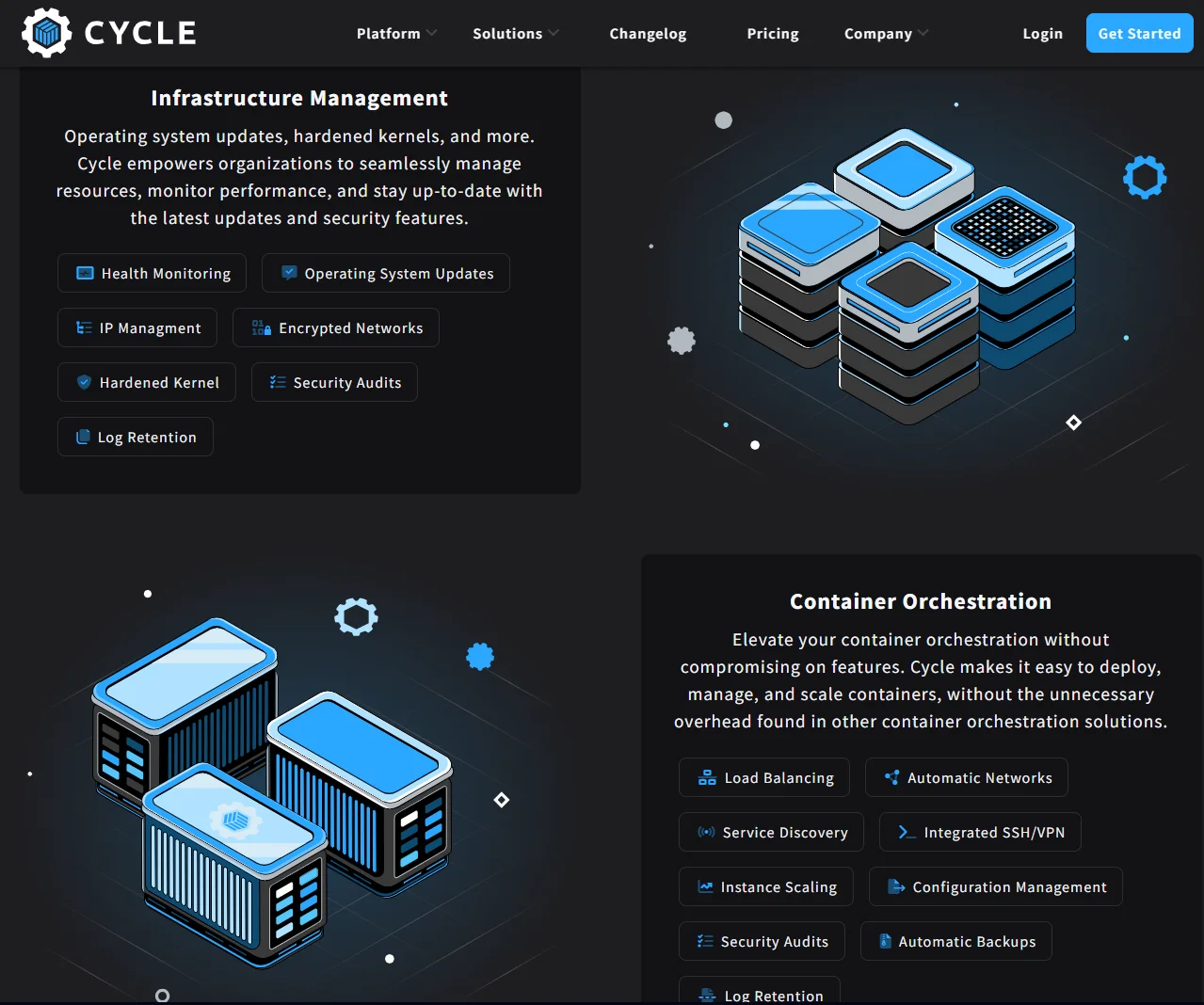
With Cycle.io, you get a fully managed container orchestration platform so you can deploy your infrastructure, upload containers, and scale them with less hassle.
Like other Kubernetes competitors here, Cycle offers additional capabilities, including advanced security, networking, automation, and ML training models. The platform also gets regular updates, supports bringing your own infrastructure, and lets you use virtual machines or bare metals just fine.
Other container orchestration tools like Kubernetes include Docker Swarm, Kontena, and Mesos (no longer accepting new features).
How To Understand, Control, And Optimize Kubernetes Costs With Confidence
However you choose your Kubernetes alternative, you still need to keep track of its costs. Yet, most Kubernetes cost management tools are clunky, inaccurate, and dependent on labels. CloudZero can change that for you.
Picture this:
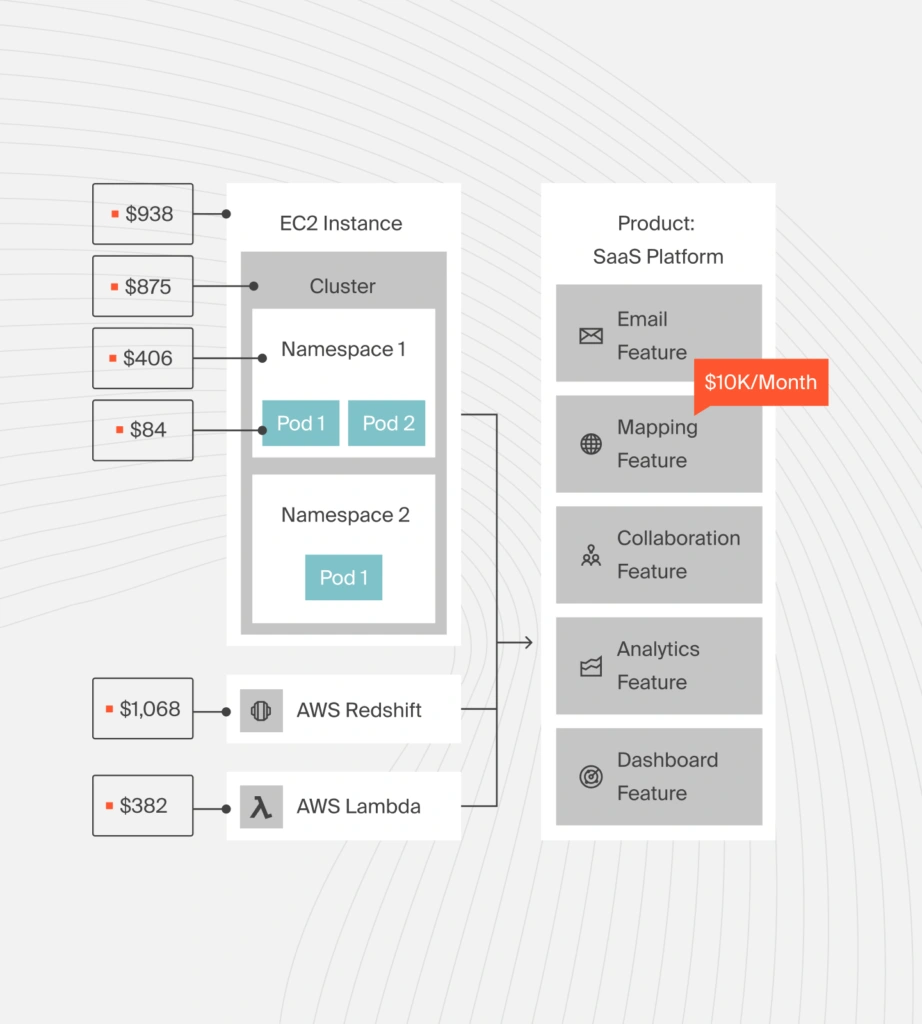
With CloudZero’s Kubernetes Cost Optimization, you can:
- Take advantage of Kubernetes cost analysis accuracy that sets the standard for the industry
- Allocate 100% of your Kubernetes spend in minutes to a few hours no matter how complex your environment is
- Track your K8s costs in real-time to prevent surprise costs
- Get Kubernetes cost insights hourly to surface and help you fix any issues that could lead to overspending
- Understand your Kubernetes costs granularly; in terms of technical concepts such as Cost per cluster, per Node, or per Pod, as well as in business dimensions such as Cost per Customer, per feature, per Service, per Environment, per Team, and more.
- View your containerized and non-containerized costs in one place. No need for separate dashboards when you can compare K8s cost insights alongside AWS, Azure, GCP, or Databricks, Snowflake, New Relic, Datadog, MongoDB, and more.
- Receive timely, noise-free, and context-rich cost anomaly alerts to help you prevent budget overruns.
CloudZero customers like Remitly now allocate 50% more costs without tagging. Additionally, MalwareBytes now saves 6-10 hours a week managing their cloud costs. Even Drift has saved over $3 million. Here’s your chance.
 to see how CloudZero can keep you in control of your Kubernetes costs hassle-free.
to see how CloudZero can keep you in control of your Kubernetes costs hassle-free.

